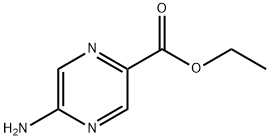could you tell me what silicon is? What are the chemical properties of silicon? What are the uses of silicon? And what are its compounds?
What Are the Key Properties of Silicone vs. Plastic? Uses and Characteristics Explained
Related Encyclopedia
Related Products More >
-
- 9016-00-6
- CNY equest For Quotation
-
- 9016-00-6
- CNY equest For Quotation
-
- 63148-62-9
- equest For Quotation
- 1kg
-
- 63148-62-9
- equest For Quotation
- 1ton
-
- 63148-62-9
- equest For Quotation
- 1kg
-
- 63148-62-9
- equest For Quotation
- 25kg
-
- 63148-62-9
- equest For Quotation
- 1kg
-
- 63148-62-9
- equest For Quotation
- 1ton





 沪ICP备2021018848号-5
沪ICP备2021018848号-5

Now, about its chemical properties. Silicon is semi - metallic, also known as a metalloid. It's not as reactive as some other elements. At room temperature, it doesn't react with water or oxygen easily. But when heated, it can react with oxygen to form silicon dioxide. It can also react with strong alkalis like sodium hydroxide to produce silicates and hydrogen gas.
As for its uses, silicon is a superstar in the electronics industry. It's the main material for making computer chips. Because of its semiconductor properties, it can control the flow of electricity, which is crucial for all our electronic devices like smartphones, laptops, and tablets. In the solar energy field, silicon is used to make solar panels. It can convert sunlight into electricity, helping us generate clean energy.
When it comes to silicon compounds, there are quite a few common ones. Silicon dioxide, also called silica, is everywhere. It's the main component of sand, quartz, and glass. Another important one is silicone. It's used in things like cookware, medical implants, and sealants because it's flexible, heat - resistant, and biocompatible. There are also silicates, which are used in making ceramics, cement, and even some types of insulation materials. So, silicon and its compounds play a really big role in our lives!
Now, about its chemical properties: silicon is pretty stable and doesn’t react easily with air or water at room temperature. But when you heat it up, it can react with oxygen to form silicon dioxide (SiO₂), which is basically sand or quartz. It also reacts with certain metals to form silicides and with halogens like chlorine to form silicon tetrachloride. Oh, and it’s a semiconductor, which means it can conduct electricity under certain conditions—this makes it super important in electronics.
Speaking of electronics, silicon’s everyday uses are everywhere! The biggest one is in computer chips and semiconductors. Your phone, laptop, and pretty much any gadget with a circuit board probably has silicon in it. It’s also used in solar panels because it’s great at converting sunlight into electricity. And let’s not forget glass—silicon dioxide is a key ingredient in making glass. Even in construction, silicon compounds are used in things like cement and ceramics.
As for silicon compounds, Silicon dioxide (SiO₂) is the most common—it’s in sand, quartz, and glass. Then there’s silicon carbide (SiC), which is super hard and used in things like abrasives and car brakes. Silicones ) are silicon-oxygen polymers with organic groups attached—they’re used in everything from sealants to medical implants. Oh, and silanes are used in making semiconductors and waterproof coatings.
Chemically, silicon is pretty stable. It doesn’t react easily with air or water at room temp, but at high temperatures, it can bond with oxygen to form silicon dioxide (SiO₂), which is basically sand or quartz. It also reacts with metals to form **silicates**, which are found in rocks and minerals. Silicon loves bonding with oxygen, so you’ll see it in a lot of oxygen-based compounds.
As for uses, silicon is everywhere! The biggest one is in electronics—it’s the main material in computer chips and solar panels because it’s a semiconductor. It’s also used in glass, ceramics, and even in silicone (the rubbery stuff we talked about earlier). Oh, and it’s in construction materials like concrete and bricks.
Some common silicon compounds include silicon dioxide (SiO₂), silicones (used in sealants and lubricants), and silicon carbide (SiC), which is super hard and used in cutting tools. So yeah, silicon’s a pretty versatile element!